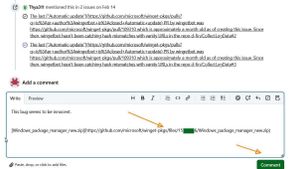The accident that hit the Iranian government's helicopter on Monday, May 20, carrying several high-ranking officials of the country including the President Ebrahim Raisi, was reported by CNN as Bell 212.
Bell 212, first introduced by Bell Helicopter Textron in 1968, has become one of the world's most known and reliable medium utility helicopters. With more than 900 units produced to date, Bell 212 is used in various operations, ranging from the military to humanitarian and industrial missions.
Specifications and Performance
Bell 212 is equipped with two Pratt & Whitney Canada turboshaft engines PT6T-3B Twin-Pac which provide sufficient power for a wide range of missions. The helicopter has an overall length of 17.46 meters and a main rotor diameter of 14.63 meters, with a height of 4.62 meters. Bell 212 is capable of reaching a maximum speed of 213 km/hour and a cruising speed of 185 km/hour. With a range of 438 km and a long flight of about 2.9 hours, this helicopter is ideal for medium-range operations.
Bell 212 can transport up to 14 passengers or cargo with a total weight of up to 2,767 kg, including full fuel. The fuel capacity alone reaches 1,220 liters. The cabin configuration is flexible, allowing rapid changes according to mission needs, from medical evacuation to cargo transportation.
Missions and Phenomenal Use
For more than five decades, Bell 212 has been used on phenomenal missions around the world:
Military Operations: In Vietnam War, Bell 212 (together with Bell UH-1 Huey) was used extensively for troop transportation, medical evacuation, and logistics. This helicopter also plays a role in various UN peacekeeper operations in the Middle East and Africa.
Rescue and Medical Evacuation: Bell 212 is often used for rescue missions in mountains such as the Alps and the Himalayan. When natural disasters such as earthquakes in Haiti in 2010 and the 2004 Southeast Asian tsunami, these helicopters played a key role in evacuation and humanitarian assistance.
Offshore Industry: In the oil and gas industry, Bell 212 is used for workers' transportation and equipment to and from offshore oil platforms in the North Sea and Gulf of Mexico.
Firefighters: The helicopter is equipped with an external water bucket to extinguish forest fires in the United States, Canada, and Australia.
Research and Exploration: Bell 212 is used in research missions in Antarctica, assisting researchers' transport and equipment in extreme environments.
SEE ALSO:
Accident Record
Like all helicopters, Bell 212 did not escape incidents and accidents. Several major accidents involving Bell 212 include:
Yarmouth, Canada (1998): A Bell 212 fell into the sea due to engine failure, killing four people on board.
Atyrau, Kazakhstan (2012): A helicopter belonging to the "Kazakhstan Emergency Situations Ministry" crashed during a training mission, killing eight people.
The South China Sea (2015): The Bell 212 helicopter operated by Brunei Shell Petroleum fell into the sea, killing one person.
The causes of accidents generally include engine failures, bad weather conditions, and human error. However, Bell 212 remains considered a reliable and safe helicopter for various operations, thanks to proper maintenance, good crew training, and strict adherence to operational procedures.
Bell 212 has proven itself to be a reliable multipurpose helicopter in various challenging conditions and missions. With its long history and various uses, Bell 212 continues to be the main choice for military operations, rescue, industry, and research around the world.
The English, Chinese, Japanese, Arabic, and French versions are automatically generated by the AI. So there may still be inaccuracies in translating, please always see Indonesian as our main language. (system supported by DigitalSiber.id)













